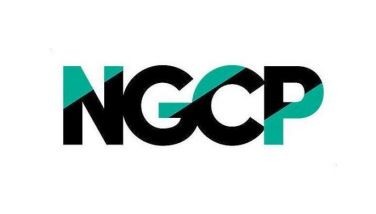Global airlines to incur more losses next year
MANILA, Philippines - There is no recovery in sight yet for the world airline industry as the International Air Transport Association (IATA) revised its financial outlook for 2010 to an expected $5.6 billion global net loss, larger than the previously forecast loss of $3.8 billion.
For 2009, IATA maintained its forecast of an $11-billion net loss. IATA represents some 230 airlines, including those from the Philippines, comprising 93 percent of international air traffic.
“The world’s airlines will lose $11 billion in 2009. We are ending an Annus Horribilis that brings to a close the 10 challenging years of an aviation Decennis Horribilis. Between 2000 and 2009, airlines lost $49.1 billion, which is an average of $5 billion per year,” IATA director general and CEO Giovanni Bisignani said.
“The worst is likely behind us. For 2010, some key statistics are moving in the right direction. Demand will likely continue to improve and airlines are expected to drive down non-fuel unit costs by 1.3 percent. But fuel costs are rising and yields are a continuing disaster. Airlines will remain firmly in the red in 2010 with $5.6 billion in losses,” Bisignani added.
Industry revenues are expected to rise by $22 billion (4.9 percent) to $478 billion in 2010. However, revenues remain $57 billion (11 percent) below the peak of $535 billion in 2008 and $30 billion below 2007 when passenger traffic was at similar levels to what is expected in 2010.
Following a decline of 4.1 percent in 2009, passenger traffic is expected to grow 4.5 percent in 2010, stronger than the previously forecast 3.2 percent in September. A total of 2.28 billion people are expected to fly in 2010, bringing total passenger numbers back in line with the peak recorded in 2007 .
Cargo demand is expected to grow seven percent to 37.7 million tons in 2010, stronger than the previously forecast five percent in September), following a 13 percent decline in 2009. IATA expects total freight volumes to remain 10 percent below the 41.8 million ton peak recorded in 2007. It said cargo demand is rising faster than world trade as depleted inventories are rebuilt. Once the inventory cycle completes, growth is expected to fall back in line with world trade.
In 2009, passenger and cargo yields plummeted 12 percent and 15 percent, respectively. Cargo yields are expected to improve 0.9 percent in 2010. But passenger yields are not expected to improve from their extraordinary low level. This is being driven by two factors: excess capacity in the market and reduced corporate travel budgets. Capacity adjustments in 2009 were made at the expense of lower aircraft utilization. An additional 1,300 aircraft due for delivery in 2010 will contribute to 2.8 percent global capacity growth, putting continuing pressure on yields. On top of this, corporate travel buyers have adjusted their budgets to reflect lower premium fare levels, IATA said.
An average oil price of $75 per barrel (Brent) is expected in 2010, up considerably from the $61.8 average expected for 2009 . As a percentage of operating costs, fuel will be 26 percent in 2010. This is considerably lower than the 32 percent of operating costs that fuel comprised in 2008, but still twice the 13 percent of operating costs that fuel represented in 2001-2002.
Over 2009 , the industry raised at least $38 billion in cash ($25 billion from capital markets and $13 billion from aircraft sale and leasebacks). The ratio of cash to revenues improved for European and North American airlines, but was flat for Asia- Pacific carriers. This will provide a cash cushion for the approaching first quarter’s seasonally weak traffic lows.
“The number of travelers will be back to the peak levels of 2007, but with $30 billion less in revenues. The $38 billion cash cushion built up throughout this year will help airlines survive through the low season, but there is no recovery in sight for 2010 . Tough times continue,” Bisignani pointed out.
- Latest
- Trending

























